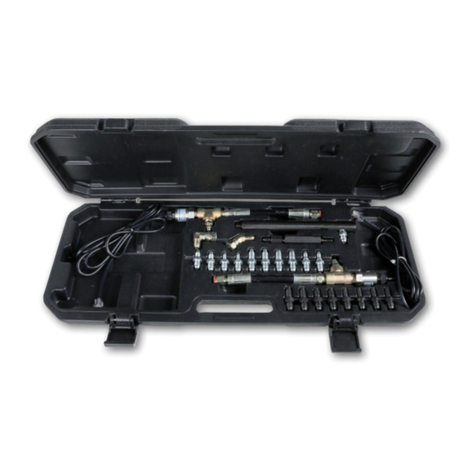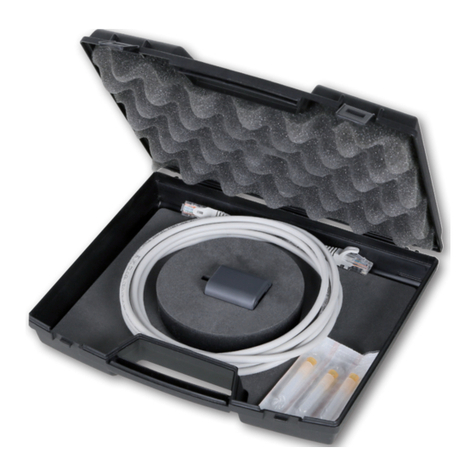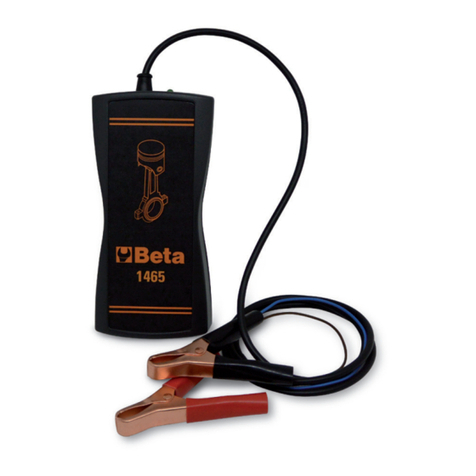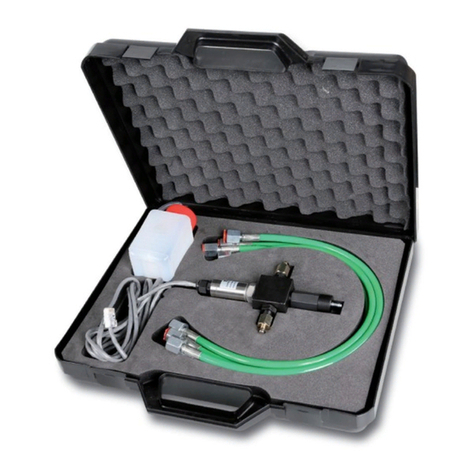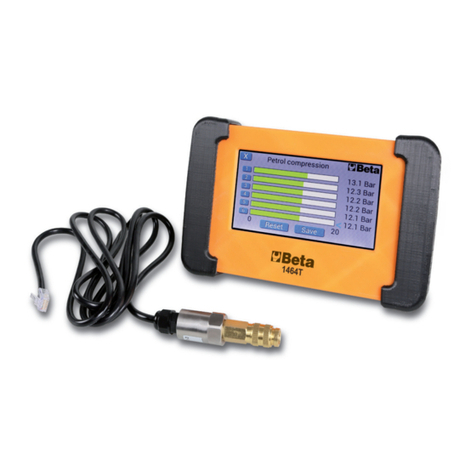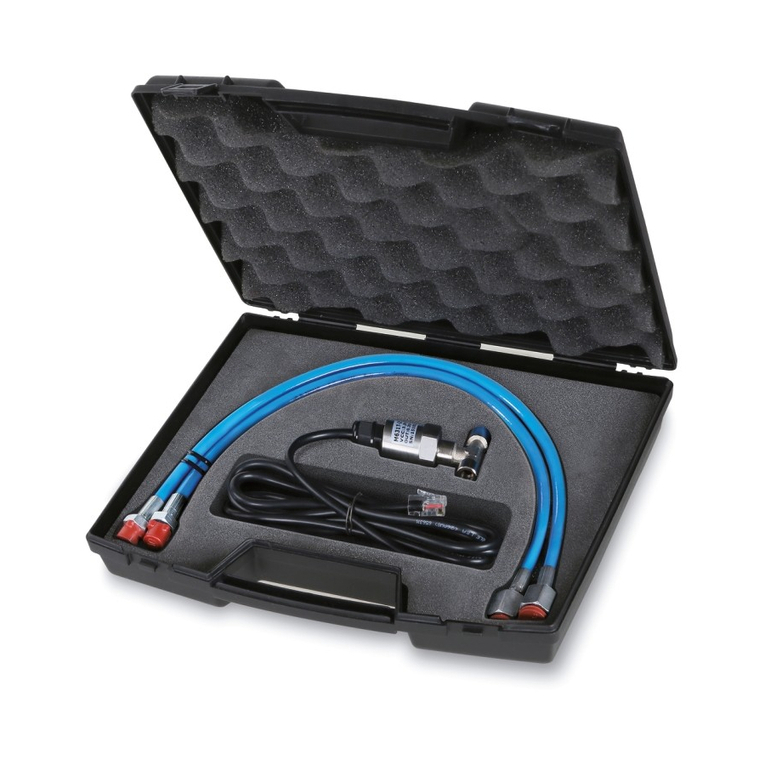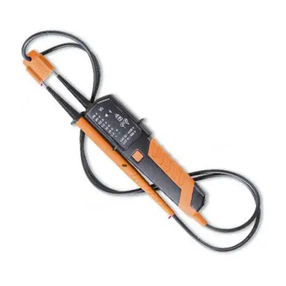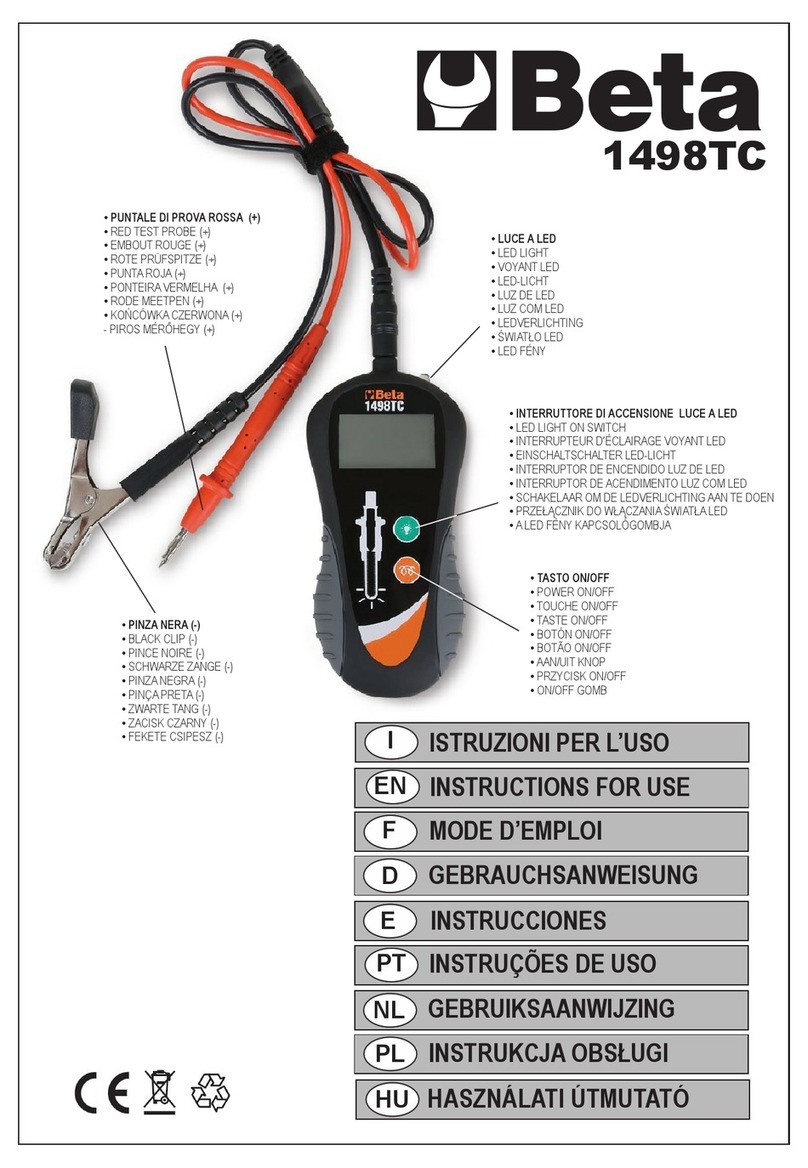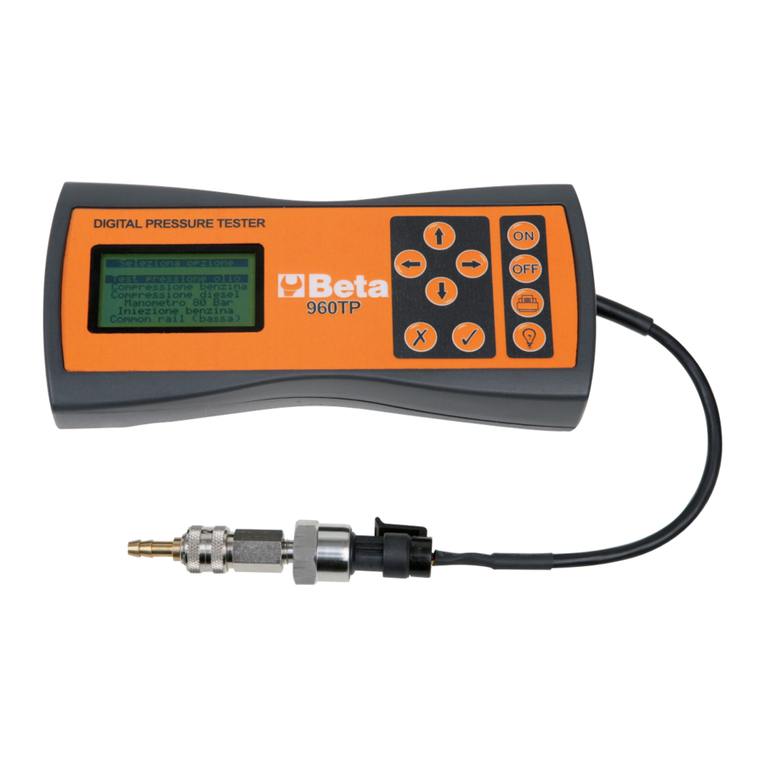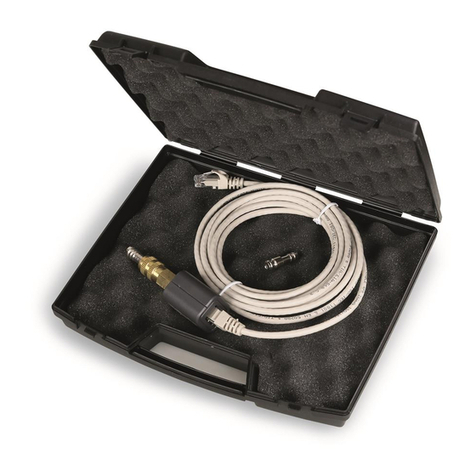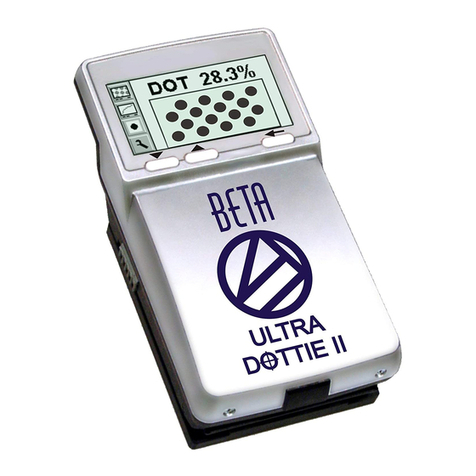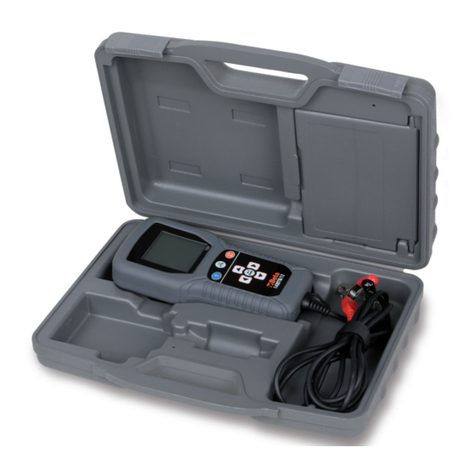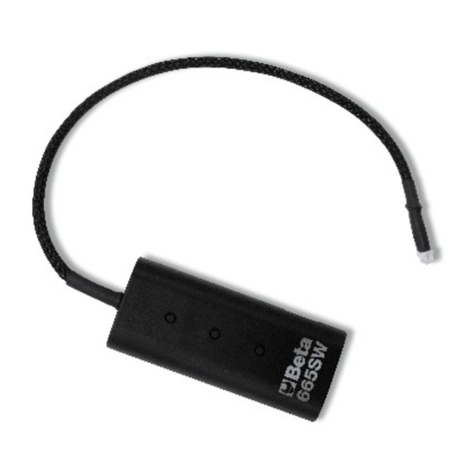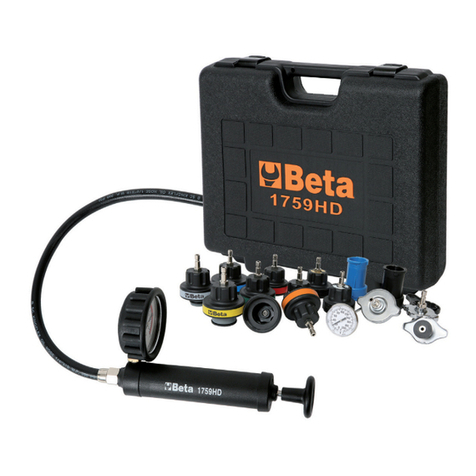ISTRUZIONI PER L’USO I
1498 TB/W
TESTER DIGITALE WIRELESS
PER BATTERIE E IMPIANTI DI RICARICA
ATTENZIONE
Lavorare in prossimità dei poli di batterie ad acido è pericoloso. Le batterie generano gas esplosivi
durante la ricarica o il test.
Riporre il tester in luogo asciutto, non esponetelo alla pioggia o alla neve.
PRECAUZIONI DI SICUREZZA PERSONALI
1. Non lavorate su batterie ad acido in assenza di altre persone.
2. Assicuratevi che l’area intorno alla batteria sia ben ventilata prima d’iniziare il test.
3. Indossate occhiali di sicurezza e vestiti protettivi.
4. Tenete sempre vicino una scorta di acqua pulita e sapone nel caso l’acido della batteria venga a
contatto con la pelle, gli occhi o i vestiti.
5. Se la pelle o i vestiti vengono a contatto con l’acido della batteria, lavate immediatamente con
sapone ed acqua. Se l’acido entra negli occhi, lavate immediatamente gli occhi in acqua corrente
fredda per minimo dieci minuti e consultate subito un medico.
6. Mai fumare o lavorare con fiamme libere o utensili che producono scintille in prossimità della
batteria o del motore.
7. Prestare attenzione a non colpire la batteria con corpi metallici o duri.
8. Prestare attenzione a non far cadere sulla batteria utensili metallici, possono emettere una
scintilla o corto-circuitare la batteria o altre parti elettriche e possono causare un’esplosione.
9. Rimuovete gli oggetti metallici personali come anelli, braccialetti, collane e orologi quando
lavorate con I poli di una batteria ad acido, possono produrre un corto circuito ad alta intensità
abbastanza causando ustioni.
10. Pulite i terminali della batteria stando attenti che gli agenti corrosivi non entrino in contatto con gli
occhi.
11. Controllate che la batteria non presenti incrinature o danneggiamenti, se sono presenti non
utilizzate il tester.
12. Se la batteria non è del tipo senza manutenzione, aggiungete acqua distillata in ogni cella sino a
raggiungere il livello specificato dal costruttore. Questo aiuta a purificare l’eccesso di gas nelle
celle. Non oltrepassate il livello consigliato.
13. Se necessario rimuovete la batteria dal veicolo, rimuovendo sempre prima il terminale di terra
(nero) dal veicolo, assicurandovi prima che tutti gli accessori nel veicolo siano spenti per non
causare nessun arco.
• Condizioni d’uso dello strumento
Lo strumento per la lettura della Potenza in A (CCA) di una batteria d’avviamento non può essere
usato in parallelo con un carica batterie, non può definirsi valido un risultato con un test effettuato: al
di sotto dei -5°C; al di sopra dei 40°C; subito dopo avere caricato la batteria, bisogna infatti attendere
alcune ore oppure scaricare per alcuni minuti la batteria in modo da togliere la carica spuria generata
dal carica batterie, prima di eseguire il test. Lo stoccaggio dello strumento deve avvenire in luogo
asciutto e ad una temperatura non inferiore a +5°C e non superiore ai +50°C, non è impermeabile.
• Manutenzione
Esente. Verificare l’isolamento delle pinze ogni 12 mesi.













